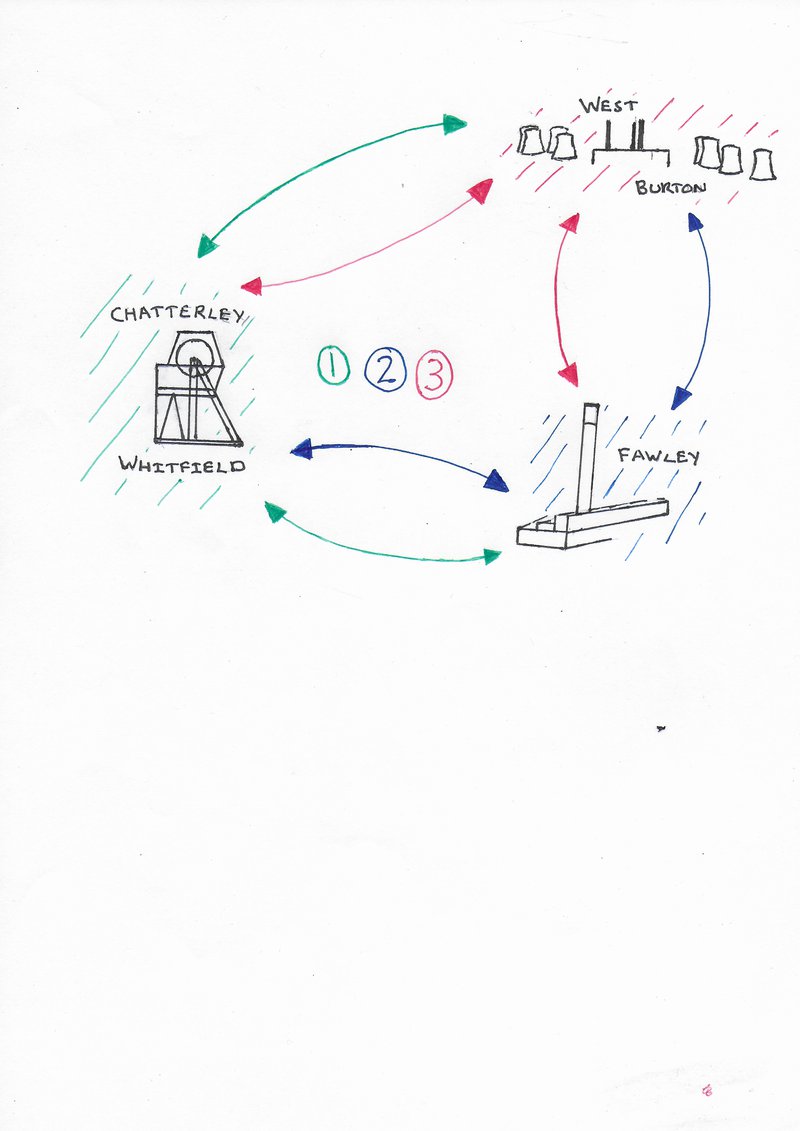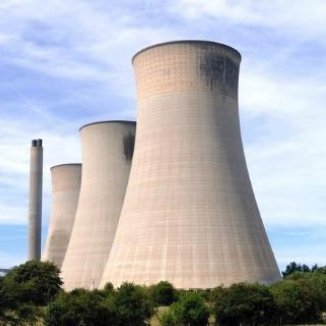The Projects
Decommissioning the Twentieth Century: Energy Landscapes, Heritage and Community
Decommissioning the Twentieth Century is funded by the Arts and Humanities Research Council (AHRC) as part of their ‘Changing Landscapes: Towards a new Decision Making Framework for UK Landscapes and Land Assets’ scheme. It aims to establish a new role for local communities in decommissioning large industrial facilities.
One impact of a zero-carbon economy will be to transform of much of the UK’s twentieth-century energy infrastructure - a change comparable to the end of coal mining. This project will examine how techniques and knowledge from the Arts and Humanities can inform more genuine and successful community involvement in what happens to sites in which many have invested much of their lives.
This project is led by academics, but residents at the heart of decommissioning will define and produce its outcomes. It brings together communities connected to three sites:
- Chatterley Whitfield Colliery near Stoke on Trent
- Fawley Power station near Southampton
- West Burton Power station near Gainsborough.
These sites are the past, present and future of decommissioning, and each provides crucial experience, expertise and knowledge about the possibilities, pitfalls and opportunities for community ownership of decommissioning processes and their outcomes.
We are working with a range of community partners, artists and other local groups to co-produce reflective responses and creative outputs from the workshops. Read about our partners here.
Our vision is to seek a means by which local people and communities might be involved in decommissioning right from – and even before – the start, so that these sites become places for their communities. This means seeking ways to collect and express memories, connections and meanings before such sites are closed, demolished, or subject to new plans and developments.
We will:
- Commission co-creative, interactive art at each of our three sites, and evaluate its effectiveness.
- Support this through a series of 12 (four sets of 3) workshops alongside our community partners.
- Produce a Policy Paper for planning professionals, heritage organisations and politicians on what the new process should look like.
Planning Creativity
Planning Creativity is a project funded by the Arts and Humanities Research Council (AHRC) as part of their ‘Changing Landscapes: Towards a new Decision Making Framework for UK Landscapes and Land Assets’ scheme. It expands our existing project ‘Decommissioning the Twentieth Century’. Together, these two projects aim to establish a new role for local communities in decommissioning the many large industrial facilities that served late-20th century carbon culture.
Planning Creativity is designed to ensure that the perspectives and methods developed in Decommissioning the 20th Century are meaningful to a planning process increasingly driven by data, mathematical modelling and top-down priorities. We must not lose sight of the complexity, granularity and often contradictory character of the different values different people might ascribe to the same place. Planning Creativity will point to a way to solving some of these issues about how community perspectives are represented on planning models that are increasingly distant from local and individual needs.
Planning Creativity runs from February 2020 to January 2022 (extended due to COVID19 - watch this space). We will:
- Learn from heritage planners, by carrying out knowledge exchange activites with Historic England’s industrial strategy unit.
- Create a virtual, interactive 3D model of Chatterley Whitfield Colliery, to which stakeholders in the site will be able to add their own memories, documents or images to specific structures in the model. The model will both radically increase the visibility and accessibility of the site (which is very difficult to access), and enable decision-makers to understand the significance of the site in a detailed and data-rich way.
- Build a ‘Communities of Decommissioning’ network, brought together at an end of project event. While we will begin with our three existing sites, we aim to establish a legacy of shared expertise amongst communities associated with those sites at risk of future decommissioning, so that advice can be shared about engaging with specific processes, planning expectations, and how they can work proactively to champion the voices and perspectives of local stakeholders in the decommissioning process.
Rural Modernism
The Planning Creativity and Decommissioning the Twentieth-Century projects are part of the work of the Rural Modernism research network. First a presence on Twitter (@ruralmodernism), the network is now pursuing more formal academic activities. The network hosted a British Academy conference at Northumbria University in 2019, bringing together historians interested in the development of the UK’s rural places in the twentieth century, and it is now preparing a collection of essays called New Lives New Places: Rural Modernity in Britain to be published in in 2022/3 in the Proceedings of the British Academy series.
These essays challenge the long association of modernity with urban places and experience by examining the modernising forces at work in the British countryside. We’re interested in the historical tension between notions of the countryside as constituting a deep continuity and the powerful sense that modernisation was essential to its future prosperity. We consider how modern infrastructure, such as reservoirs, power stations, and communication structures like television and radio masts, disproportionately deliver public goods to densely populated urban places. This meant infrastructural developments were sometimes regarded as a form of internal colonisation, giving rise to the complaint that the urban was parasitic on the rural. We also look at how initial resistance to the visual impact of modern developments could shift to acceptance and, in time, attachment to new structures, generating new conceptions of rural heritage.
Understanding these processes is timely. The rise of the digital economy is gradually undermining older communication and power-generating infrastructure. Sprouting up in their place is a new rural modernity of mobile phone masts, windfarms and solar panels—in some places fracking remains a possibility. Political and public debate about their efficiency and place within the landscape recalls the debates of the 1950s and 1960s. Reconciling environmental, social and economic interests with perceived local, regional, and national needs remains as difficult as ever.
Image (CC): Graham Hogg.


